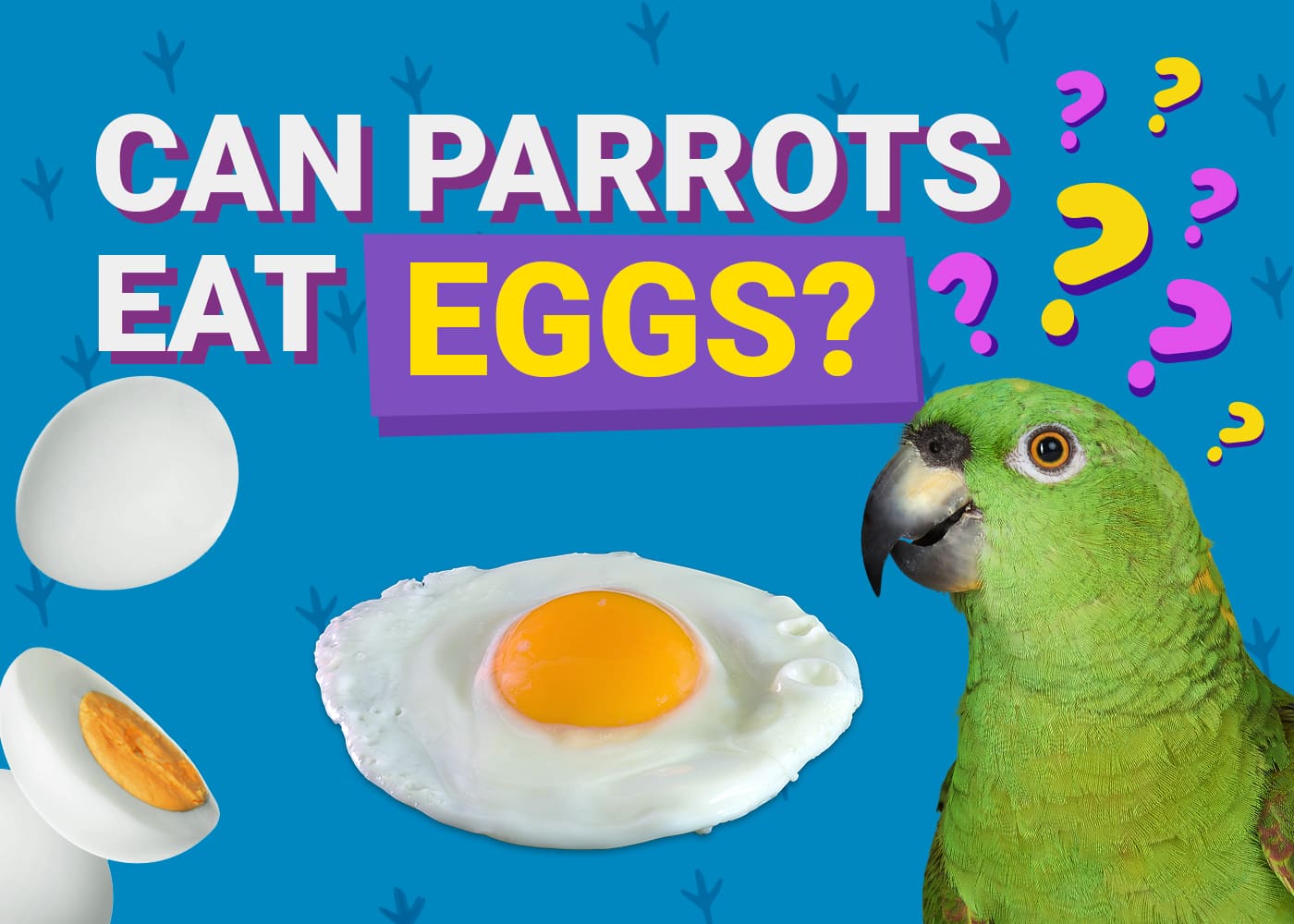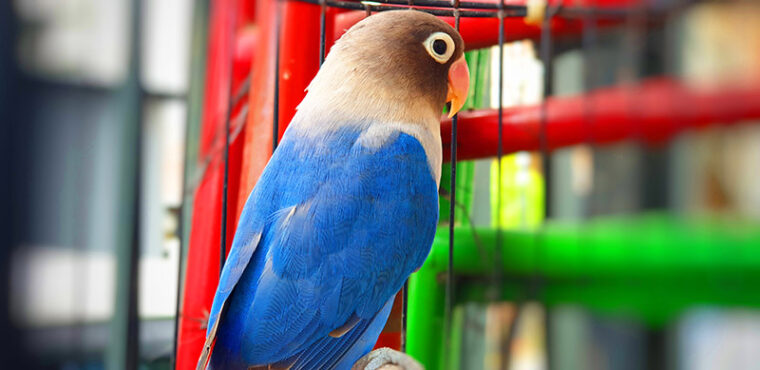
Lovebirds are native to sub-Saharan Africa and Madagascar and are gorgeous birds that make wonderful pets. Lovebirds reach sexual maturity when they are around 10 months old, and once they find a partner, they are monogamous and mate for life. So strong is the bond between these birds that they’ll pine for one another if a mate dies or gets separated, and they will also display unusual behavior akin to depression.
Lovebirds in captivity can live for 15–20 years with the right diet and environment, making them a large responsibility. This can prove too much for some owners, and they choose to give their birds up for adoption. If you are the lucky new owner of an adopted lovebird, you may be wondering how old they are and if there is a way to tell the bird’s age.
In this article, we share tips that may help you determine your lovebird’s age, although it’s not as straightforward as it may seem.
The 6 Ways to Determine the Age of a Lovebird
1. Banding
Most reputable breeders and pet stores will “band” their lovebirds with aluminum bands that indicate the aviary and hatch date of the bird. These bands are usually attached to a bird’s leg at around 5–10 days old. Some states in the U.S. require banding by law, and most reputable breeders will brand their chicks regardless. The date indicated on the band is the easiest way to tell the age of a lovebird, but of course, some breeders do not band their birds and some owners may remove these bands.
2. Incomplete feathers
If your lovebird has incomplete feathering on their neck and face area or still has “down” feathers, they are likely still only a few weeks old. That said, mothers are known to pluck their chick’s feathers out at times if they are trying to chase them out of the nest or feel that their chick is too hot. Lovebirds begin the weaning process at around 6 weeks old, by which stage, they should have all their feathers. If your lovebird has incomplete feathering, they are most likely only several weeks old.
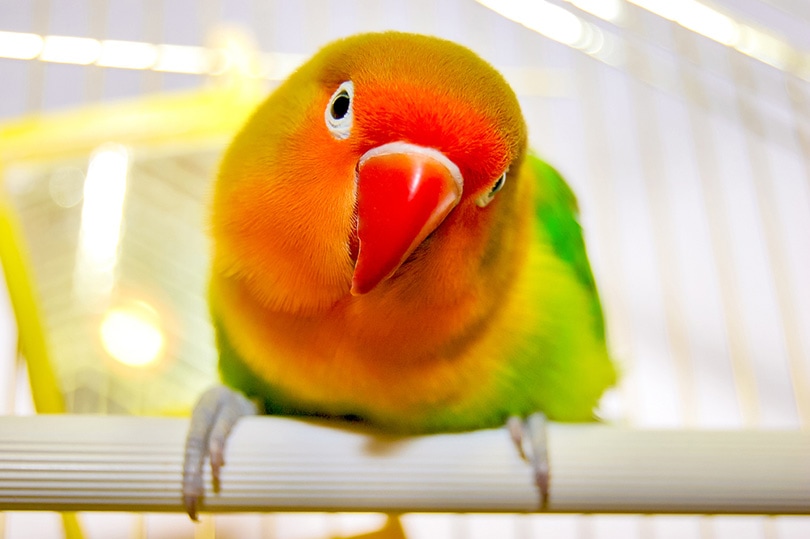
3. Eyes
With most lovebird species, their eyes will appear dark if they are still under a year old. Most lovebirds have brown or more rarely, red eyes, which only begin to show their true color at 10–12 months. If your lovebird has brown or red eyes, they are almost certainly over a year old, and darker eyes indicate that they may only be several months old.
4. Beak
Lovebird chicks are usually born with varying amounts of black splotching on their beaks. This dark coloration slowly disappears as they age and is usually gone by around 4–6 months. If your lovebird has any black splotching left on their beak, they are most likely not yet 6 months old.
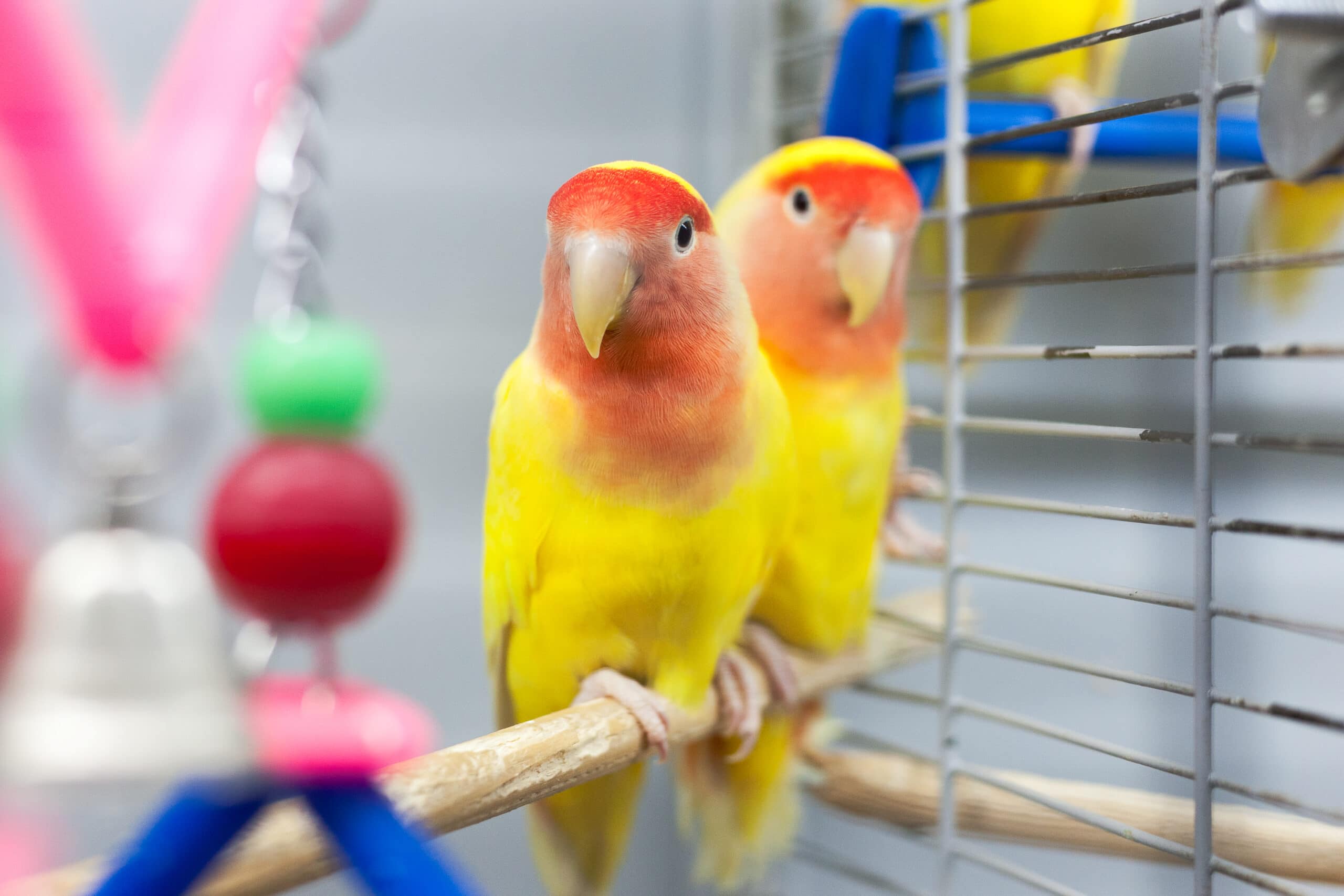
5. Feather colors
By around 5 months old, lovebirds will experience their first molting, after which, their feather colors will begin to intensify and grow more vivid. Young lovebirds often have more grey feathers on their face, which will slowly disappear. By their first molt, these should be all but gone. Any lovebirds over the age of 5–6 months should not have any grey feathering on their face, and their feathers should be bright and vivid in color.
6. Feeding
Young lovebirds that have recently been weaned—around 6–8 weeks, occasionally up to 10 weeks—still do not have fully formed beaks and cannot break open sunflower seeds or other hard seeds that are regularly fed to lovebirds. If your lovebird is having trouble eating regular bird seeds, they may still be only a couple of months old.
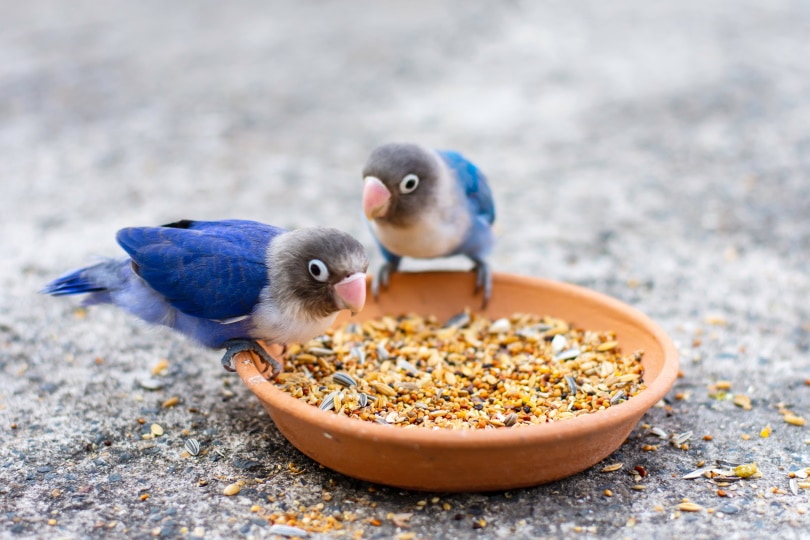
Lovebirds Over 12 Months
Without a band that indicates the date of hatching, it is unfortunately almost impossible to tell the age of your lovebird after the first year. Some lovebirds that have been well looked after may appear exactly the same at 10 years as a lovebird that is barely 1 year old! The person or pet store that you purchased the lovebird from may have an estimate for you, but other than a dated band, rough estimates at best are all that is possible.
Conclusion
Lovebirds in captivity can easily live to 15 years and beyond, and if they are well looked after, their plumage and appearance will not easily give away their age. Without a band or information from the breeder, it’s almost impossible to tell the age of a lovebird beyond the first year. That said, following these steps will help give you a rough estimate of your lovebird’s age if they are not yet a full year old.
- Related Read: How Old Do Macaws Get? (Min & Max Lifespan)
Featured Image Credit: SkyroseStudio, Shutterstock





